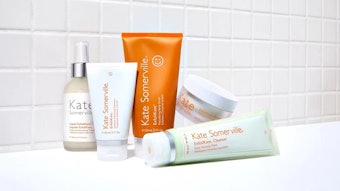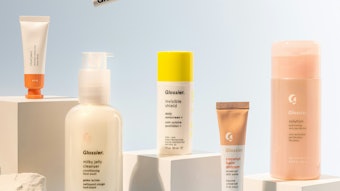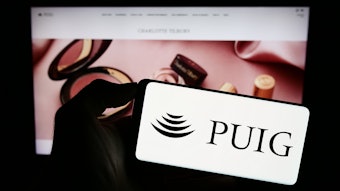Every once in awhile, a brand will have an idea for a new product, develop it and bring it to market successfully without first engaging in product concept testing. However, when you consider that, according to AccuPoll, up to 95% of new product launches fail each year, Ernst & Young claims 80% of new brands fail, and only about 15–20% of new brands and products are actually successful (according to P&G), it is easy to clearly see that this is the exception and not the rule. Like a well-told children’s story, a well-crafted and -executed product concept test can draw in, capture and create real interest in your potential new product before one dollar is spent or one man-hour is wasted, saving your idea from falling prey to these bleak statistics.
Gathering Critical Information
So much more than just words on a page, product concept testing offers brand owners the opportunity to test new concepts with consumers at the most critical juncture in the product’s life cycle—before it enters the market. Written in the same tone and manner as if the product were already on-shelf, good testing engages consumers with the critical touch-points of your potential new product, creates awareness and excitement with consumers, and allows brand managers to understand exactly where consumers will let you go with an idea. But even greater than awareness, product concept tests can save brands millions in lost sales, prevent the need for laborious rebranding after launch and, hopefully, avert the inevitable loss of interest if a new product launches to a lukewarm consumer.
Product concept tests let you gauge your target consumer’s reaction to a new product idea quickly, tweak concepts kill the ones that aren’t working and green-light the winners, allowing you to ultimately introduce the most appealing, must-have product that says what your consumers wants to hear, and that they already want to buy.
Speak Their Language and Don’t Overwrite
When writing the product concept stories you will ultimately use to test your ideas with consumers, put yourself in their shoes and think strategically about what you want to say. What will they want to hear, read or learn about the product? What real-world problem does it solve for them? Why should they believe in it, and what benefits will it bring to them? Although you may not ultimately stick with all of the concepts you test when it comes time to actually market and brand the final product, the information you glean by testing several different stories will tell you exactly what messages resonate with them the most, saving you time and money. And by answering these questions up front, you establish the strong informational benchmark you need to bring the product concept story to life as an actual product with the strongest, most appealing consumer message.
To get the truest read on what consumers think of your new product idea, it’s important to include certain elements in every product concept story: product name, core promise, consumer insight, reason to believe and benefits. Additional information to highlight includes new technology, format/distribution, taglines and, if pertinent, price. Ideally, to get the truest feedback on what elements of your new product they value the most, the reason to believe and the technology description should be very nearly the same in every concept. Because this aspect of the product is not likely to change much anyway, keeping it similar in each concept allows the participants to focus on the other aspects of the potential new product that can be altered, changed or rewritten with their feedback, such as name, reason to believe and core promise.
Additionally, when writing your concepts, be aware that overwriting won’t necessarily bring about the desired results and could even potentially alienate test participants, and/or sway test results. Some things to watch out for include:
- Writing a product concept story that is too complicated = they feel stupid.
- Writing a product concept story that is too easy or boring = they check out.
- Writing a product concept story that is too long = they stop reading.
Keep product concepts clear and concise; engage consumers with witty, sharp copy that is similar to current, in-market verbiage found on competing products, and make sure information flows consistently. This will help you develop winning concepts to test, which will then help you gain feedback you can use.
Share Your Vision
In addition to the right words, a successful product concept test should include images to contextualize this new idea. Rather than spending lots of time, money and effort on fully designed brand or packaging images, use one simple, central image in each concept that reflects the overall idea of your product, is easy to identify and understand, and that doesn’t complicate the text. For example, if you are testing an idea for a new shampoo technology, don’t bother designing an entire ad campaign with fancy bottles, elaborate fonts and editorial images. Instead, simply feature a basic image of a generic shampoo bottle (and box, if necessary), along with the potential product name you are using for the test. It may seem counterintuitive to use a mundane image but the truth is, it doesn’t matter what consumers think of the bottle image at this point. Your true intent is to glean what they think of your potential product idea and your concepts. Once you have their permission to move forward with the actual concept—and you know they believe all the benefits, technology and core promises—then you can move onto the more exciting ad imagery and design, and not the other way around.
Although the image used should be the same for each concept, there is room for some creativity. Experiment with different color schemes, and you could even go so far as to include a few very simple design elements that give each image a unique spin. And don’t underestimate the importance of naming each of your potential new products appropriately. It may seem innocuous, but names that too closely resemble existing products, that are simply too outlandish or just don’t fit the personality of the concept you are testing can sway your results. Ponder names carefully and conduct a quick Google search of your final options to be sure you aren’t brushing up against any existing products.
Once you’ve written your concepts and created the images you want to accompany them, now the fun begins—fielding the actual product concept test and gathering consumer feedback. Did participants love one reason to believe over another? Were certain benefits more appealing than others? Did they believe in the technology and the core promises, or not so much? And, perhaps most importantly, did they believe in the actual idea, and will they buy this product when it hits the shelf?
By strategically crafting a product concept test with impactful stories and appropriate images, your new product will say what they want to hear, and enter the beauty market with not only their blessing but their interest as well.
Alisa Marie Beyer is the founder and creative director of The Benchmarking Company (TBC), a global beauty consulting firm offering business, strategy, consumer intelligence and branding. As publishers of the “must-read” Pink Report and WomenTrends, TBC keeps its fingers on the pulse of the industry and offers unparalleled consumer insights and intelligence. E-mail: [email protected]; www.benchmarkingco.com










